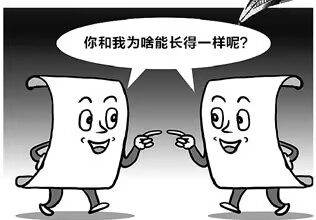When we say cultural industry, we will always say the cultural products are controlled by capital and protect, reproduce the industrial generating system. A directional way to understand this concept is some cultural products are becoming standardized and homogenized for more profit. There is an example, which is suitable for us using cultural industry to understand is Japanese animation. In 1960s, Japanese animation was rising, robot cartoons was popular at that time, but technology wasn’t highly developed. Creators wanted to express and convey their ideas, which was hard to put into use, they draw paintings and tried many express forms, even though their work are abstract and amusing to us nowadays, they still exhibited their ideas and constructed many new things. Also, because it was original period, there wasn’t many limitations, the leader of Japanese animation in 1980s, who created Gundam series is a leftist, supporting communism and CPC, the way they convey these idea were creative. But when we say today’s Japanese animation, we’ll always make some comments like, homogenization, foolish, boring. Although the technology are highly developed, commercialized market lets the producer using same routines, plots can be guessed easily. For example, there was a popular theme several years ago, Isekai, which means the main character is transported to a different world with some fantastic elements. They are called “toilet roll” by animation lovers that just be consumed and meaningless to watchers, always the same development. But if we compare them with the first Isekai animation-Aura Battler Dunbine in 1983, we can find logical development, creative story breakthrough our imagination, the main character of this animation transported to a western fantastic world from a modern world, but he returned and the war in Isekai shift to modern world. There are some plots we can’t see in this theme nowadays, not only the loss of aura and old animation creators are more skillful than new creators, but also capital system restricted directions. Nowadays, cultural products can be seen as commercialized consumption goods, an animation will be separated into many elements and tags, if the elements are not meet the requirements of market, products will not be recommended, some consumers also choose animations just judging from their tags, sounds like it’s a type of form is more important than content. Producers and consumers are all lacking patience to explore what is good animation and maintain, even reinforcing the stability of system. So, some people always say that a remake or remaster version of animation is worse than the original version. Culture industry is powerful in some fields, but there still exist some ways to resist, once the subculture community generated, independent creation out of passion doesn’t need to follow the rules of market and make profits, only needs to satisfy the community members, which means creators may have the least limitation in subculture communities. AI is also potential way to make some breakthrough in this situation, everyone can be a creator, they can just please themselves. There is also a positive way to say this phenomena: capitalism will not exists forever.
1 thought on “Using cultural industry theory to understand and interpret contemporary phenomena”
Leave a Reply Cancel reply
You must be logged in to post a comment.


I really enjoyed reading this post because the example of Japanese animation makes the idea of cultural industry very easy to understand. The comparison between the 1980s anime and today’s Isekai trend clearly shows how creativity has changed under commercial pressure. I think it’s a strong point that you connect cultural theory to something so familiar and popular.
At the same time, I feel the post could go a bit deeper in explaining why this change matters. For example, how commercialization affects the audience’s way of thinking or taste. The structure could also be clearer if you separated the theory explanation, examples, and conclusion into different paragraphs. But overall, it’s a thoughtful post that uses cultural theory in a relatable way.